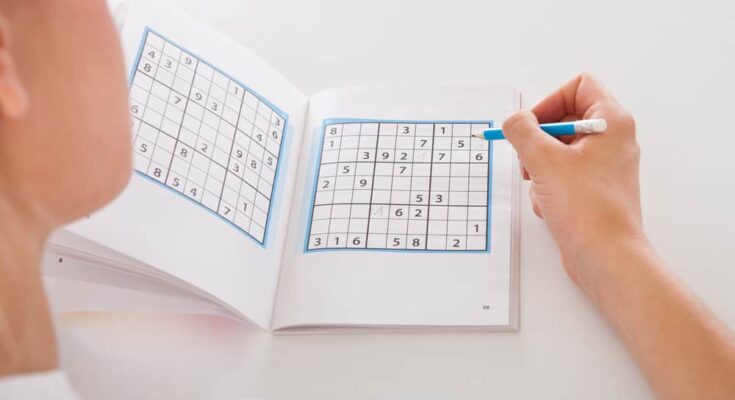Sudoku is a popular number-placement puzzle that has been gaining popularity over recent years. Whether you’ve never tried it or are just starting to wrap your head around the game, these tips are designed specifically for you. You’ll soon be a Sudoku pro by understanding and following these tips.
Here are some tips to get you started;
Start with the Easiest Cells
When faced with a new Sudoku puzzle, starting with the easiest cells is essential. These rows, columns, and boxes already have several numbers filled in, leaving fewer possibilities for the remaining cells. By focusing on these easily solvable cells first, you’ll gain confidence and momentum as you tackle more challenging cells.
Practice with pencil marks
While playing Sudoku, it’s helpful to use pencil marks as placeholders for possible numbers that could fit in each square. Start by lightly writing small numbers in the square’s corners, denoting all possible candidates for that square. This technique allows you to visually track the possibilities better, eliminating numbers as you progress through the puzzle. When you’re confident you’ve found the correct number for a specific square, erase the pencil marks and fill in the number with a pen or dark pencil. This method makes staying organized and focused on your game much easier.
Scan rows, columns, and regions
Scanning is a fundamental technique Sudoku players use to spot any opportunities to place numbers in the grid. There are various ways to scan for clues:
- Look for rows, columns, or regions that already have several numbers filled in, and use that information to deduce which numbers still need to be added.
- Analyze rows and columns that intersect with a specific region, narrowing down possible numbers for that region.
- Keep track of the flow of numbers in the grid, moving horizontally, vertically, or within regions, crossing off possibilities as you go along.
By scanning the grid effectively and continuously, you’ll be able to find new opportunities to place numbers and ultimately solve the puzzle.
Use the process of elimination
The process of elimination is a logical method widely employed by Sudoku players. It entails ruling out any possibilities in the row, column, or 3×3 box. By ruling out these possibilities, you can quickly identify the correct digit to place in a particular cell. For instance, once you’ve eliminated all the possible numbers for a cell, the remaining number should be the correct one to place in that cell.
Look for hidden hinges
Sometimes referred to as “naked singles,” hidden singles are a type of Sudoku strategy where a specific number can only be in one cell in a given row, column, or 3×3 box, even though it may not seem evident at first glance. The key to finding these hidden singles is to look closely at each cell while considering the numbers already placed in the row, column, or 3×3 box. Identifying these hidden singles can help you fill in cells confidently and progress in solving the puzzle.
Understand the rules
The foundation of solving any puzzle lies in understanding its rules. Sudoku is a 9×9 grid consisting of 9 smaller 3×3 boxes, and your mission is to fill in the empty cells with numbers 1 through 9, adhering to these three fundamental rules;
- Each row must contain the numbers 1 through 9, with no repetition.
- Each column must also have the numbers 1 through 9 without repeating any number.
- Each 3×3 box must contain the digits 1 through 9 exactly once.
Remember, every Sudoku puzzle has only one unique solution.
Start with easy puzzles
Jumping into complex puzzles headfirst might cause frustration and kill your motivation. Instead, opt for puzzles categorized as “Beginner” or “Easy” to build your confidence and skills gradually. As you progress and feel more comfortable, try your hand at more challenging puzzles.
Scan Rows, Columns, and Regions
Consistently scanning rows, columns, and 3×3 boxes is crucial in your Sudoku-solving journey. Look for cells or regions where a specific number can only fit in one place. Keep an eye out for these common patterns:
- Check rows and columns with many pre-filled values, as they have fewer options for missing numbers.
- Pay attention to 3×3 boxes that share a row or column with another box where a certain number is already placed.
- Utilize the process of elimination, focusing on how the placement of one number affects others in its row, column, and 3×3 box.
Wrapping up
Embarking on your Sudoku journey may seem intimidating at first, but with these fundamental tips, you’ll soon find yourself tackling puzzles easily and enjoying the satisfaction of cracking each one. Understand the rules, start with easy puzzles, practice using pencil marks, and regularly scan rows, columns, and regions to hone your Sudoku skills. Embrace the challenges, and remember to have fun along the way.




